Ever seen those notifications that pop out from the corner of your screen that says ‘Breaking News! Roger Federer conquers title 21’? (we can be optimistic, right?)
Or those notifications that appear on mobile telling you that Astra’s got a birthday sale going on? Admit it. Didn’t it intrigue you?
Welcome to the world of push notifications!
With push notifications, you’ll be in a classic case of a love-hate relationship. Why so?
While web push notifications are a great way to keep your users updated with the latest information (and offers) that they willingly asked for, getting those constant beep-beep notifications can be annoying.
Did you know that the average CTR for an ad hat ranks number one on the search network is about 7.11%, while the overall CTR for push campaigns is 12%?
This can go as high as 30% for a highly targeted campaign!
Isn’t it about time you included push notifications as part of your marketing strategy? We definitely think so!
This article will help you understand everything you need to know about push notifications. We will also cover some of the best web push notification software that you can use.
Let’s begin!
What Is a Web Push Notification?
Push notifications are short clickable messages that pop up on the screen of the device you are using or your browser.

It’s a communication channel where you can send offers, convey messages, make announcements, and call to action quickly. Once opted-in, users will receive notifications on their mobile device or their desktops.
Have you noticed the notifications that appear on your mobile device after you have installed an app?
For instance, you may have installed a fitness app that notifies you of the number of steps you’ve covered. You may have also installed an app that updates you with live scores or track the stock market.
All these come as default once the app is installed and do not require your opting in.
On the desktop, you get to decide if you’d like to opt-in to push notifications before they arrive.
How Web Push Notification Works
The way push notifications work is pretty straightforward. You opt-in and you get notified.
It’s like subscribing to a newsletter, receiving an SMS or a reminder service. It all starts when you opt-in.
What happens behind the scenes is a little more than just 1, 2, 3.
Without getting too technical, let’s understand how push notification works.
Step 1: The Opt-in
It all begins when you opt-in and subscribe to a push notification. Have you noticed a popup notification as soon as you visit a website?
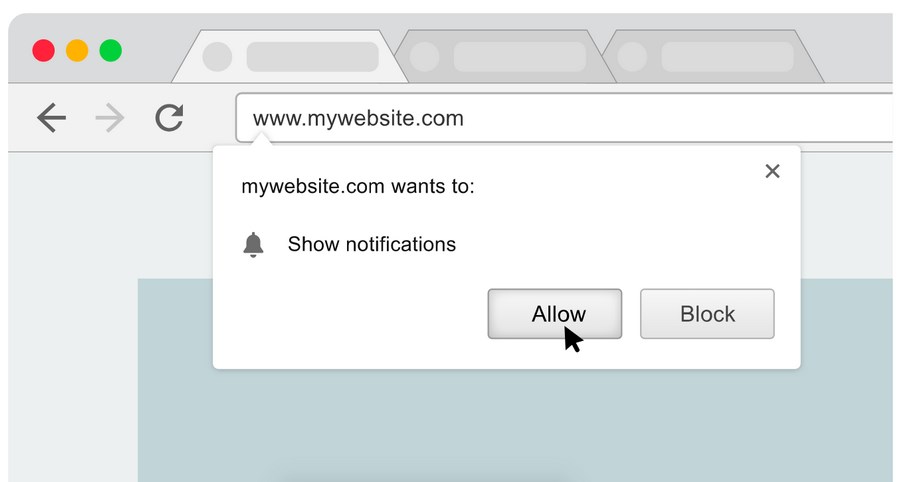
While it might be too early to expect users to opt-in as soon as they land on your website, they may end up subscribing if they see value in your offerings.
When a user subscribes, we not only get their permission to send push messages, but we also get a PushSubscription from their browser.
What is a PushSubscription? It contains all the information required to send a push message to that particular user. Consider PushSubscription as that unique ID that you collect from a user’s device to address notifications directly to them.
Once you have this information, you will send these details to your database so you can send future push notifications.
Step 2: Send a Push Notification
This is where the magic happens.
When you want to send a push notification to your users, you will need to call for a push service.
This is done through an API call. An API call is simply the process where your information is sent and processed back to you.
An API call made to the push service will include the data to be sent, who to send the notification to, and how to send it. All this happens on your web server.
After the API call, the push service receives the request, validates it, and delivers the notification to the relevant browser.
What happens if the browser is offline? The message is queued and will be delivered when it comes online.
You can also set instructions to the push service and define how notifications are queued. The instructions can include:
- How long the message should be queued before it’s removed and not delivered
- Urgency/priority of the message
- The name of the push message
Step 3: Notify the User
Now that all the work in the backend is completed, it’s time to deliver the message.
The push service will keep your message on the server until:
- The device comes online and the message is delivered
- The message expires. When this occurs, the push service drops the message from its queue
Typically, push messages are encrypted. When the push service delivers a message, the browser decrypts the data and then notifies you.
Types of Push Notifications
Now that we know how push notifications work, let’s figure out the different types of push notifications.
Essentially, there are two types – web push notifications and mobile push notifications.
Web Push Notification
Using this method, you can send notifications to a user on their desktop or mobile.
In desktops/laptops, the notifications simply slide in at the top or bottom right-hand side of the screen. On mobile devices, they appear on your screen.
Typically, web push notifications are delivered on a user’s desktop or mobile screen anytime they’re active on a browser.
Mobile Push Notification
An existing app triggers mobile push notifications on your device.
Unlike web push notifications, you don’t need to subscribe to mobile app notifications. They happen by default when you install an app on your device.
While the opt-in happens by default, both the Android and iOS users can decide whether to allow apps to send notifications.
In addition to the above, we also have desktop push notifications. Similar to mobile push notifications, they appear for the apps and products installed on your desktop only.
Push Notifications as a Powerful Marketing Tool
We now know that push notifications are sent to users who’ve subscribed or opted-in after visiting our website or who’ve downloaded a mobile app. This makes push notifications a great tool to re-engage with our audience.
You may be a blogger who’d like to update your audience with the latest post. Or an online store owner who’d like to announce the latest addition to your product line. You may run a news portal where you announce the latest breaking news.
In all cases, push notifications are a great way to continue the engagement with your audience. With an increase in user engagement, there’s a higher chance of conversion.
Using mobile push notifications, app publishers get to speak directly to their users. Unlike in email marketing, notifications don’t land in the spam folder or get forgotten in the inbox.
As indicated earlier, click-through rates are significantly higher when compared to email.
Simply put, push notifications can help:
- Improve customer experience
- Increase conversions
- Continued customer engagement
- Drive traffic back to your site
It’s relatively easy to integrate web push notifications for your WordPress site. This can be achieved by anyone, with little to no technical know-how.
What is the best web push notifications software available? That’s precisely what will be covered in the next section.
Types of push notifications
Difference between web vs. mobile push notifications
The difference between these two kinds of notifications is mainly the place where the user will end up.
The web push notification will drive a user to your website, even if they receive the notification on their mobile devices.
For example, Safari allows you to send web push notifications in web apps. You don’t need to be a developer to benefit from this marketing tool.
On the other hand mobile push notifications will drive a user to your app.
If you have a web application, it’s almost mandatory that you set up a mobile push notification system.
But you shouldn’t forget about the web version:
- If you have an online store there will be many people who don’t have your app installed on their devices.
- Your customers might be more inclined to buy when they are in front of their computer with a bigger screen, or vice versa.
You should use both if possible.
Just don’t forget to tailor the message and the goal to each of them.
Best Web Push Notifications Software
We’ve curated a list of the top web push notifications software.
While most web push notification software is free to use, paid versions tend to offer more features or better customer support.
| Software | Price |
| OneSignal | FreePaid plans start at $9/month.(Additional $3/month for every 1,000 subscribers) |
| PushEngage | FreePaid plans start at $9/month for 50K subscribers |
| iZooto | From $85/month for 30k subscribers |
| VWO Engage | FreePaid plans start at $200/month for 10K subscribers |
| Webpushr | FreePaid plans start at $29/month for 50K subscribers |
| WonderPush | $1/month for every 1k subscribers |
| PushAlert | FreePaid plans start at $10/mo for 3k subscribers |
| Notix | Free The basic plan starts at $30/month for up to 150,000 subscribers |
1. OneSignal
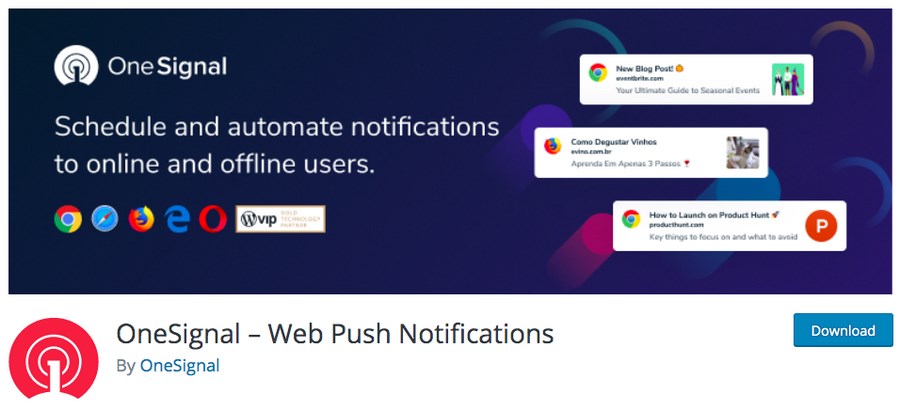
OneSignal is a popular web push notifications program that you can easily integrate into your WordPress site to increase user engagement. It’s easy to install, and once set up, you can send targeted push notifications to your visitors.
Using OneSignal, you can easily set up notification delivery, create user segments, and customize the visitor opt-in process.
OneSignal has a free plan that you could start with. It allows you to target up to 10,000 subscribers with limited personalization. For more features, you could consider their paid plans.
Features include:
- OneSignal supports browsers such as Google Chrome, Safari, Microsoft Edge, Opera, and Firefox on both desktop and Android for HTTP and HTTPS websites
- Send notifications automatically to your subscribers every time a new post is published. You could also set a friendly reminder that gets triggered automatically if your subscribers haven’t visited your website in a while
- Create targeted segments and send notifications to visitors based on the number of times they have visited, language, or set up custom attributes that you can target
- See how well your notifications are being delivered and converting with OneSignal’s real-time analytics
- Using A/B testing, you can create different sets of messages and figure out the best-performing one by sending notifications to a smaller group. Once you have your best performing one, push the notifications to the rest of your visitors
- Customize the opt-ins and the prompts your visitors see
- Schedule your push notifications to be delivered sometime in the future
Pricing:
- You can start using OneSignal for free forever with some limitations.
- Paid plans range from $9/month to $99/month and increases with the number of subscribers.
2. PushEngage

PushEngage is another popular WordPress web push notifications plugin that allows you to re-engage with your audience using web push notifications. It supports browsers such as Google Chrome, Firefox, Microsoft Edge, Safari, Opera on both desktop and mobile devices.
PushEngage is easy to install, and you can go live in a matter of minutes.
PushEngage offers a free as well as paid plan.
Features include:
- Supports multiple browsers on both desktop and mobile devices. It also supports both HTTP and HTTPS websites
- Customize your opt-in messages and choose from seven different subscription opt-ins
- Get specific by segmenting your subscribers based on various attributes such as their browser, location, interest, and so on
- Using the drip campaign feature, you can nurture your new subscribers by sending them a series of automated notifications. This is a great feature to engage with new subscribers and build a brand without having to wait for a new post or an offer to re-engage with your audience
- Carry out A/B testing for your web push notification campaigns using multiple parameters. Identify the best performing one and only then push notify your subscribers
- Automatically notify your subscribers when a new post has been published
- Auto-trigger web push notification campaigns based on customer action
- Don’t miss sending push notifications while you are on vacation or during weekends. Use the PushEngage schedule feature to push notifications. Also, you can send notifications based on the subscriber’s time zone or when they are most active online
- Use the Push Analytics data to optimize your campaigns and analyze which days, campaigns, and notifications are giving you the best results
Pricing:
- There is a free plan with a 200 subscribers and 30 campaigns cap limit.
- Premium plans start at $9/month for up to 50k subscribers and unlimited campaigns for one site.
3. iZooto
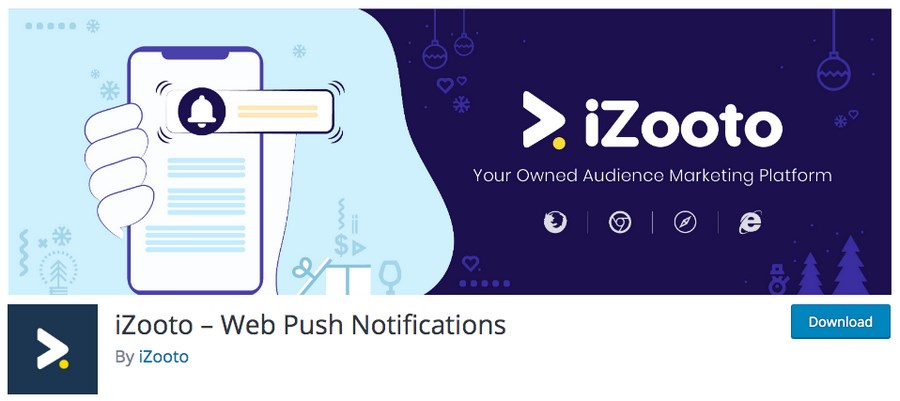
Using iZooto, you can use web push notifications and mobile app push notifications to re-engage and retain your audience.
The web push notifications can be delivered in real-time, both on desktop and mobile browsers, even when your visitors are not on your site.
Features include:
- Integrate iZooto with WordPress with just a click
- iZooto supports Accelerated Mobile Page (AMP) sites
- Using the drip feature, trigger a series of automated push notifications to engage with your subscribers
- For every new post published, update your audience by automatically pushing notifications using iZooto’s Zapier integration right from your WordPress site. The notification is auto-composed by pulling your site title, post title, and post description
- Make your notifications more appealing by incorporating rich media such as icons, emojis, images, and call to action buttons
- Schedule your web push notifications. Also, deliver notifications based on the local time zone of your audience and enhance the response rate
- Segment the audience based on the device used, their online behavior, location, demography, content viewed and target them with specific and targeted notifications
- Using analytics, get better insights into your audience growth, the performance of your campaigns, customer behavior, and more
Pricing:
- No free plan available.
- The $85/month paid plan allows you to use the plugin on 3 sites with up to 30,000 subscribers.
4. VWO Engage (formerly PushCrew)
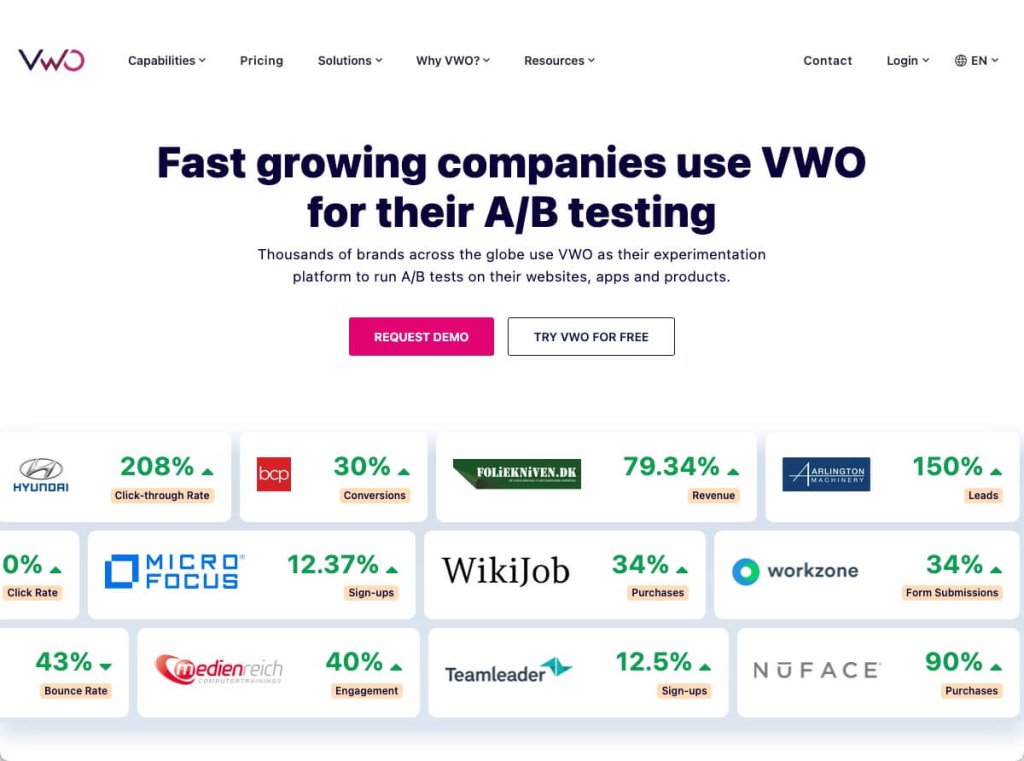
PushCrew was a web push notification platform that evolved into a new and much more powerful tool called VWO Engage.
It’s now a complete A/B testing suite for both web and mobile platforms, focused on optimizing the conversion rate of visitors and potential customers.
Among the A/B tests you can run are push notifications. But this is only a small part of what this tool offers
Features include:
- URL and device targeting
- OS targeting
- Goals and metrics setup
- Multivariate testing
- Campaign activation triggers
Pricing
- Free limited plan.
- The VWO testing web plan starts at $199/month for 10k subscribers.
5. PushAssist
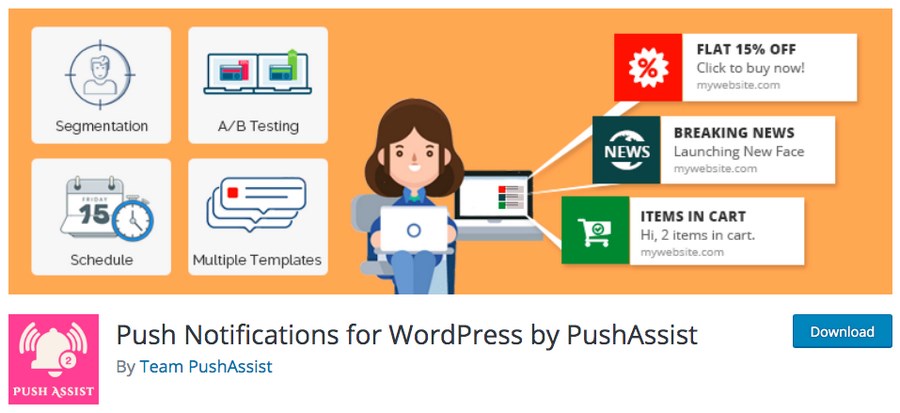
PushAssist is another comprehensive web push notification plugin. With its impressive dashboard, yoonitor all the major features and metrics within your WordPress admin panel.
Features include:
- Notifications appear instantly as message alerts. Based on the OS, the web push notifications can even sound alerts
- Easy to use REST APIs are available to send and receive data via secure HTTPS
- Segment your users into groups and push targeted notifications
- Supports both HTTP and HTTPS WordPress websites
- Send schedule notifications from the control panel (premium feature)
- Automatically send notifications to all your subscribers whenever a post is published
6. PushCrew
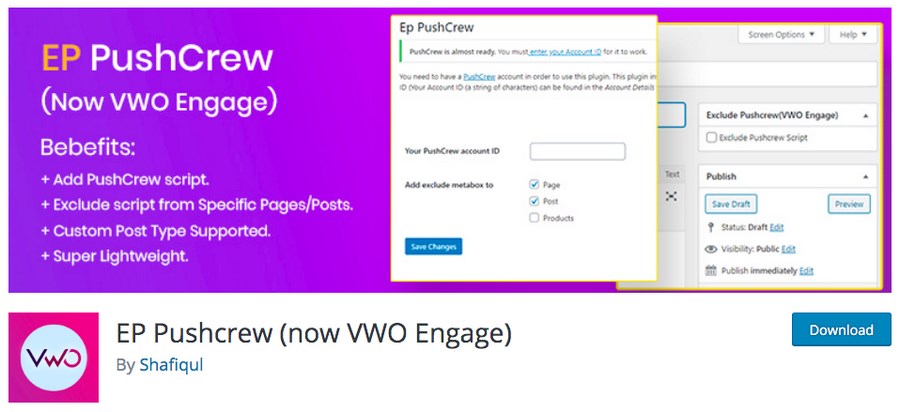
PushCrew is a web push notification platform that will automatically include the PushCrew smart code on your WordPress site.
To start using PushCrew, you’ll need to include your account ID in the plugin’s settings. In addition to automatically pushing notifications for newly published posts, you can also exclude any page or post using the meta box.
Features include:
- PushCrew script gets added automatically to all the pages/posts. You could choose to disable it if you’d like to exclude a particular page/post from being notified
- Supports custom post type
- Lightweight and easy to use
7. Web Push Notifications – Webpushr
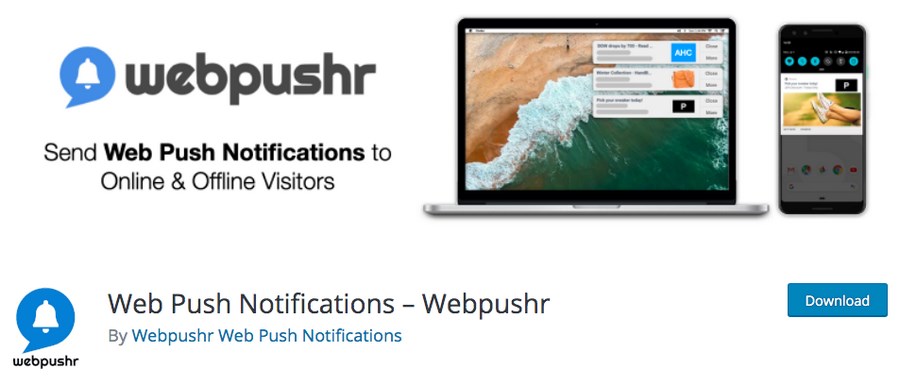
Webpushr is easy to install and allows you to send web push notifications easily to your subscribers across all popular browsers. It supports both HTTP and HTTPS sites.
Once you have Webpushr set up, your website visitors start seeing opt-in messages. Once opted in, you can notify them anytime you want.
In addition to the stand-alone websites, Webpushr offers excellent support for WooCommerce sites. You can automatically send web push notifications for any new product launch, discount offer, sales promotion, and abandoned cart.
Webpushr’s free plan has a limit of 10,000 users and offers all the plugin features such as dashboard views, subscriber logs, notification stats, and automatically triggered push notifications.
Features include:
- Supports popular browsers such as Chrome, Firefox, Safari, Microsoft Edge, and Opera on both desktop and Android. It also supports both HTTP and HTTPS websites
- Automatically send notifications to your subscribers every time a new post is published
- Automatically send web push notifications when there’s an update on your WooCommerce store, such as the addition of a new product, price drop, and so on
- Automatically send an abandoned cart reminder to re-engage with your customers who added products to their cart but forget to checkout
- See subscriber metrics such as total subscriber count, the device type, opt-in rate, and more
- Segment your audience based on location, interests, custom attributes, page visits, and send highly targeted and personalized web push notifications
- Use the event-triggered notification feature to send predefined notifications when an event is triggered automatically (e.g., new user sign-up)
- Schedule your web push notifications
- Make your notifications more engaging by including emojis and images
Pricing:
- There is a free plan that supports up to 10,000 subscribers.
- You can increase that number up to 50,000 with the $29/month plan. Larger plans are also available.
8. WonderPush
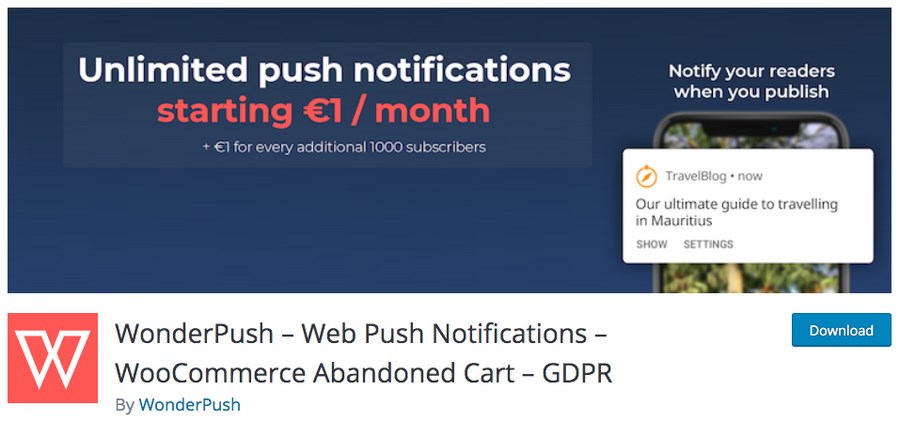
Installing WonderPush is pretty simple and takes only a few minutes, with absolutely no technical skills required. With WonderPush, subscribers get your web push notifications every time a new post is published, even if they’ve left your site.
You can notify website visitors to subscribe to your web push notifications by incorporating a browser prompt or a bell widget at the bottom of the page.
WooCommerce site owners can use the ‘Abandoned Cart Reminder’ to re-engage with customers who left the store without completing checkout.
You can send unlimited web push notifications using WonderPush. However, you will need to get into a paid plan starting from €1 per month plus €1 per 1000 subscribers. You could try WonderPush out using their 14-day free trial.
Features include:
- Supports browsers such as Chrome, Microsoft Edge, Opera, and Firefox for both desktop and Android on HTTP and HTTPS sites
- Send notifications automatically to subscribers every time a new post is published. Also, send notifications if they haven’t visited your site in a while (e.g., ‘we miss you’ messages)
- Create segments and send targeted notifications to subscribers based on events, language, or tags
- Automatically send web push notifications to users who have abandoned their shopping cart without checking out
- With WonderPush real-time analytics, you have all the metrics on your dashboard
- Supports AMP sites as well
Pricing:
- No free plan available.
- The pricing tier is $1 per month for every 1,000 subscribers.
9. Push Notifications for WordPress (Lite)
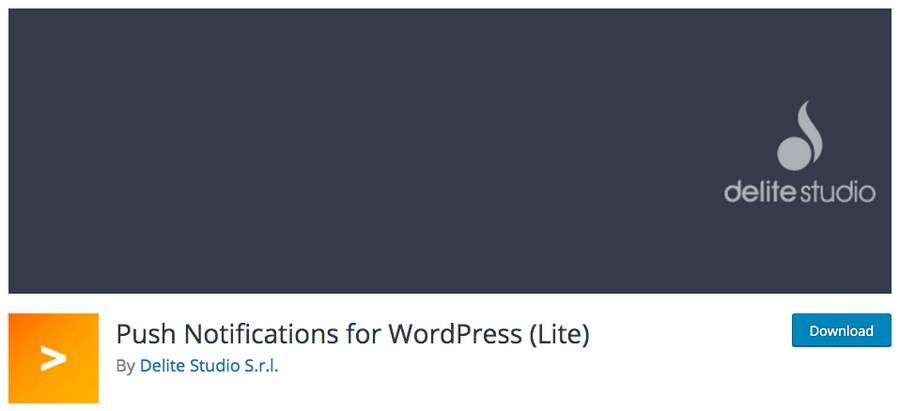
Push Notifications for WordPress (Lite) allows you to send push notifications to Android and iOS devices. The content for the apps is automatically picked up from your WordPress site, so you don’t need to put in extra work of developing your own server-side backend.
Using Push Notifications for WordPress (Lite), you can send a maximum of 1,000 notifications per post per platform, i.e., 1,000 notifications per post for each iOS and Android device.
Features include:
- There is no charge for message delivery since you are not using any third-party server
- Notify subscribers instantly via message alerts, badge updates, or even sound alerts
- Send users notifications of their preference. Users can choose the post categories for which they would like to receive notifications
- Save hours of work by using the in-built iOS and Android libraries in your apps
- Use native apps such as Ionic, PhoneGap, Cordova, and more frameworks to build interactive mobile apps
- Easily provide your own translation files with the help of the POT (Portable Object Template) file
10. PushAlert
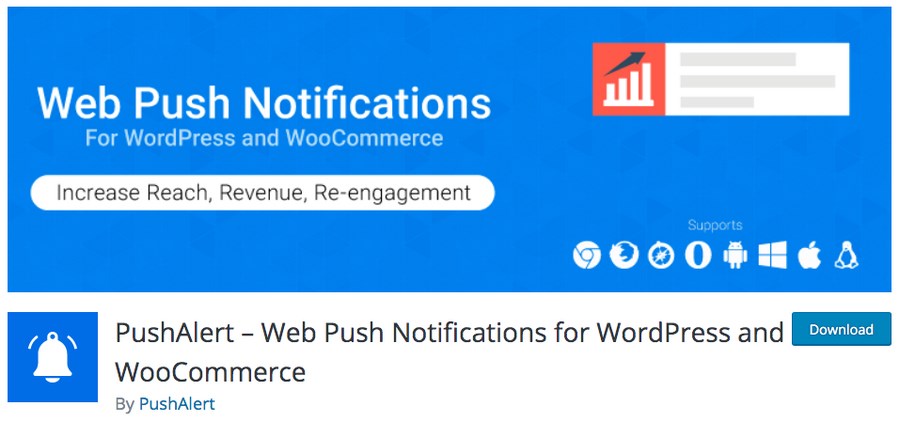
Easily convert your visitors into subscribers by using the PushAlert web push notifications WordPress plugin. With an easy-to-use interface within the editor, you can push notifications automatically every time you publish a new post.
PushAlert allows you to convert the entire web push notification subscription process into multiple languages. Customize the opt-in prompts using themes and display prompts in your subscriber’s language to get a more personal engagement and, thereby, a higher opt-in.
Features include:
- Supports browsers such as Chrome, Safari, Firefox, and Opera on both desktop and mobile
- To create a more effective re-engagement and conversions, target subscribers based on their interests, location, and other parameters
- Automate customer onboarding by effectively using the welcome drip campaign and send a series of notifications to new subscribers
- For WooCommerce store owners, you can create a funnel playbook based on the products the subscribers visit on your store
- Send notifications automatically whenever you publish a new post using an RSS feed. Set up and schedule a recurring newsletter notification with the top posts of the day right from your dashboard
- With complete localization and multi-lingual support, your PushAlert prompts can be shown in any language. Automatically deliver a single notification in the subscriber’s language
- Using timezone-based scheduling, you can notify your subscribers when they are most active, resulting in a higher engagement
- Create different variants of the same notification using different titles, messages, and images and allow PushAlert’s intelligent algorithm to determine which version works best
- Segment your customers based on their interest, location, device. Send targeted and personalized notifications to your subscribers
- Schedule your notifications
- Using the advanced stats and metrics, get insights into which notifications have a better engagement and click-through rate
Pricing:
- Free plan available for up to 3,000 subscribers.
- The cheapest paid plan starts at $10/month for 3,000 subscribers.
11. Notix
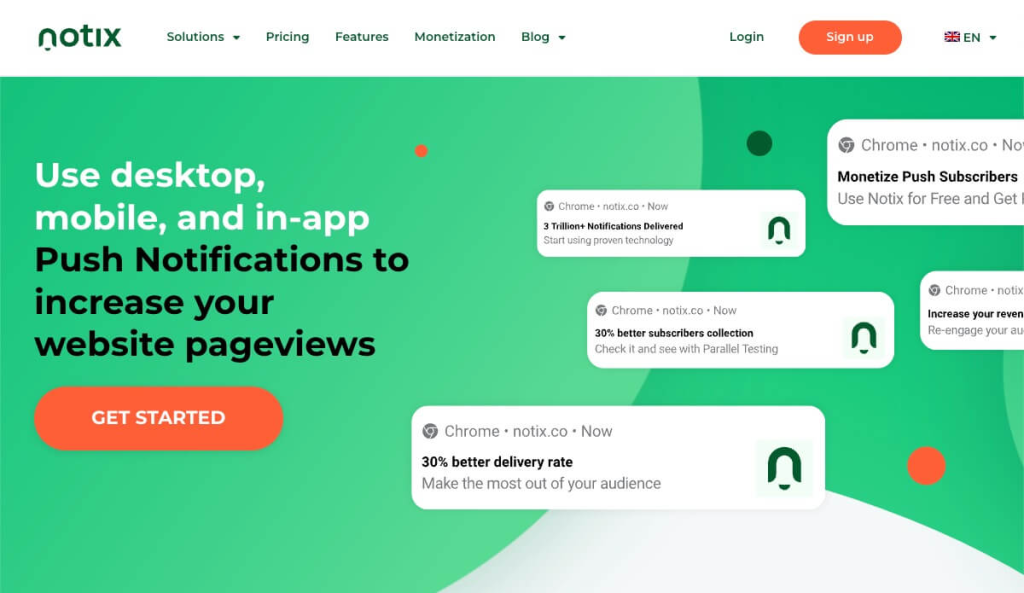
Notix is a service for reengaging audiences through web and in-app push notifications and is compatible with both desktop and mobile devices.
Something that sets it apart from other alternatives is that you cannot only use it to communicate with your audience, but also to monetize it.
Notix allows you to show ad notifications from verified partners and is a good tool if you already monetize using display advertising.
Features include:
- Onsite notifications so you can interact with readers that are currently on your site
- Audience segmentation for tailoring the message to different audiences
- Parallel testing with your current provider to check how your business would improve with Notix
- Emoji support for making the notifications more eye-catching
- Real-time statistics
- Send notifications by time zone so you can communicate with your audience when it’s best for them
Pricing:
- Free for up to 30,000 subscribers.
- The basic plan at $30/month allows you to have up to 150,000 subscribers.
How to Install Web Push Notification Software in WordPress
Now that we’ve covered the list of various web push notifications available let’s go ahead and install one and see how it works. We’ll go ahead and install OneSignal.
Step 1: Install OneSignal
Head over to Plugins > Add New and search for OneSignal.
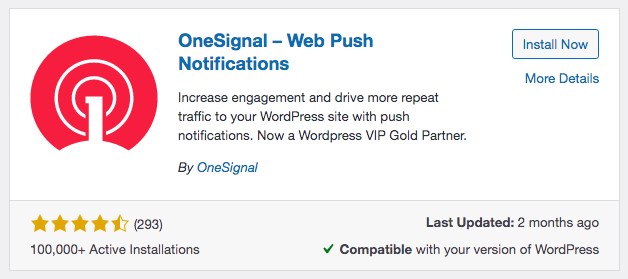
Go ahead, install and activate the plugin.
Step 2: Setup OneSignal
Now that you’ve installed OneSignal, we will need an App ID and API key to be included under the Configuration tab. For this, we will need to create an account on OneSignal.

While creating your account, you will need to add your app or website.
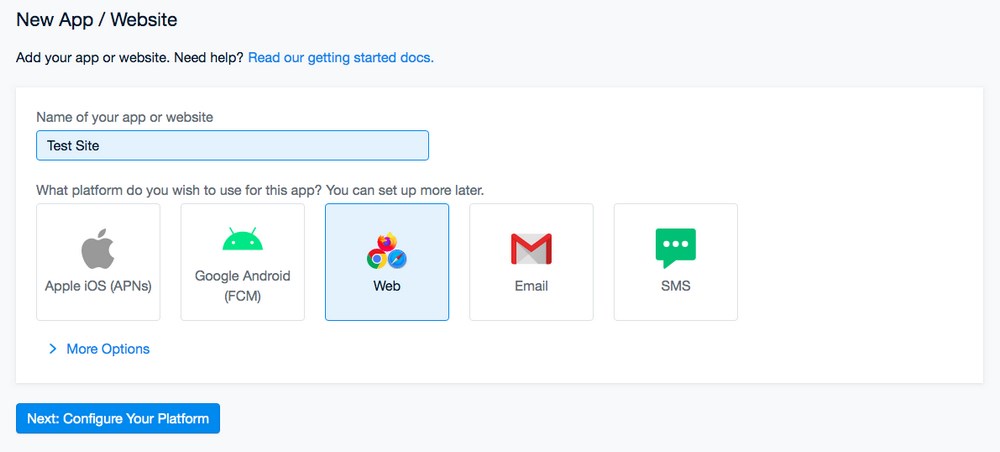
Give a name for your website account, select Web and then click on Next: Configure Your Platform.
Select your platform from the options available under Web Configuration.
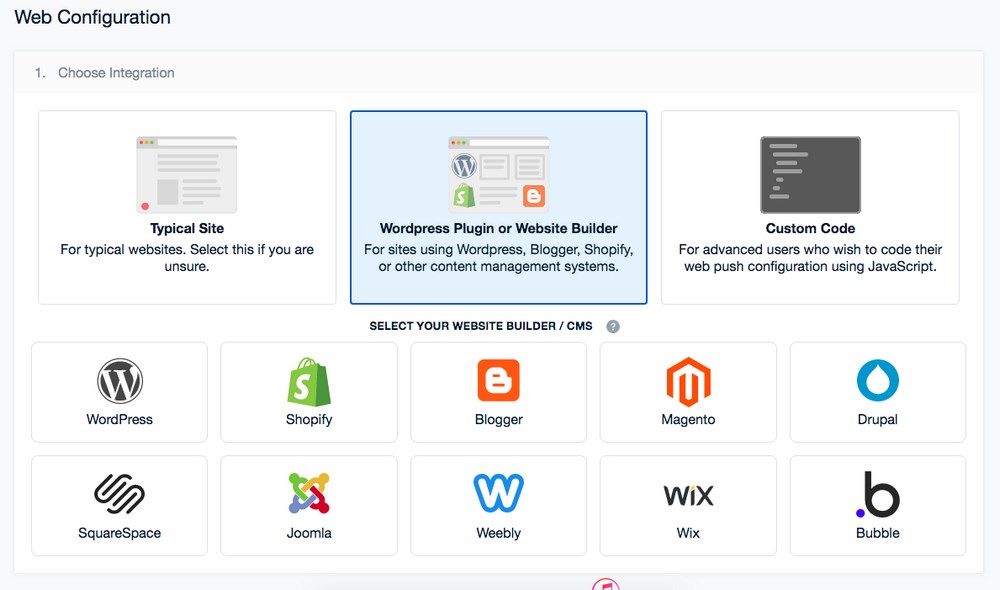
Once you select WordPress, a set of options will appear below.

Key in your website name, URL, and the other details requested. Include your website logo. This will be displayed in the push notification prompts.
Click Save once you are done.
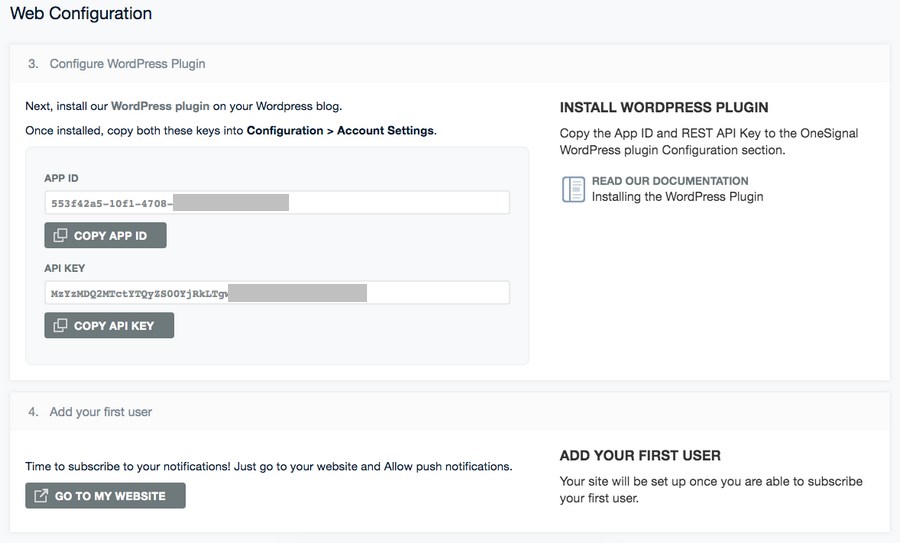
You now have your App ID and the API Key.
Copy the two because we need to insert them under the Configuration tab back in our WordPress dashboard.
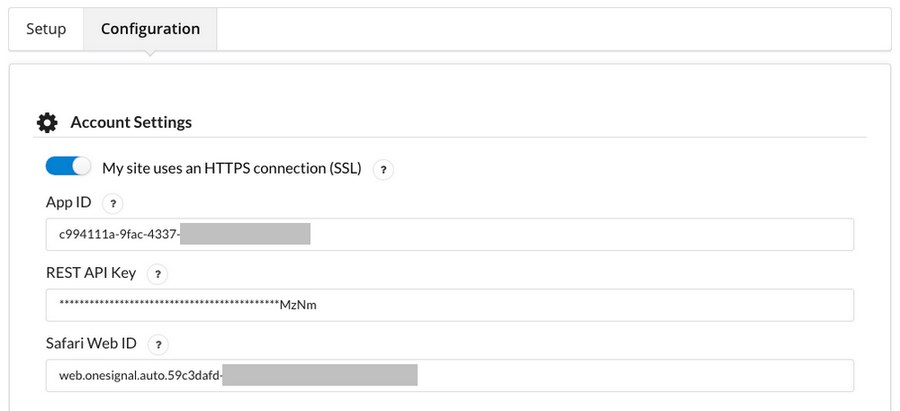
Once you’ve included these details, you’ve connected the OneSignal account with your WordPress site. All you’ve to do now is to customize the push notification prompt.
Step 3: Customize the Push Notifications
It’s now time for you to play around and customize your push notifications prompt.
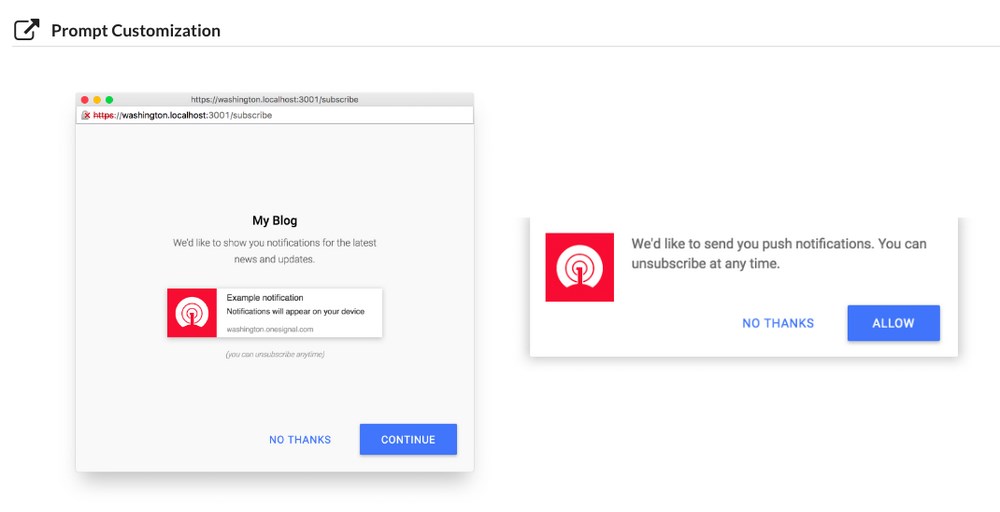
There are various options that you can customize. From customizing the welcome message to positioning the prompt on the screen, there’s a lot you can do.
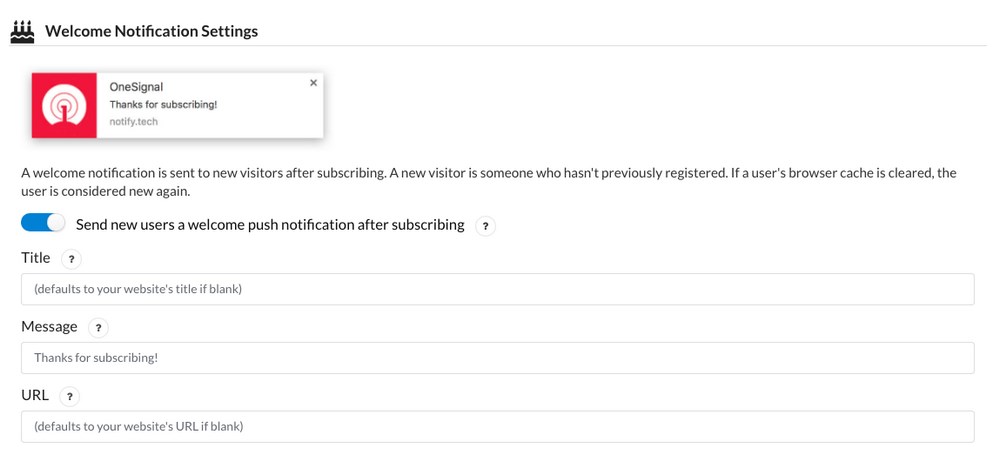
Click Save once you are done, and you are good to go!
Are You Using Web Push Notification?
In a day and age when gaining customer’s attention is getting more and more challenging, we need to constantly innovate and try new methods to re-engage with them.
With social media engagement and email marketing not providing the results they used to, as bloggers, site owners, and marketers, we need to give new marketing strategies a shot.
With an ROI of up to 2200%, an increase in daily traffic by up to 25%, and a CTR as high as 30%, the web push notification is a marketing strategy for the future.
Push notifications are, after all, a service that website visitors opt-in for. With notifications reaching them directly, it has a much higher chance of re-engagement.
We’d like to hear from you now. Do you use web push notification software in your WordPress site? Is it one of the options mentioned here? Do let us know.
Disclosure: This blog may contain affiliate links. If you make a purchase through one of these links, we may receive a small commission. Read disclosure. Rest assured that we only recommend products that we have personally used and believe will add value to our readers. Thanks for your support!
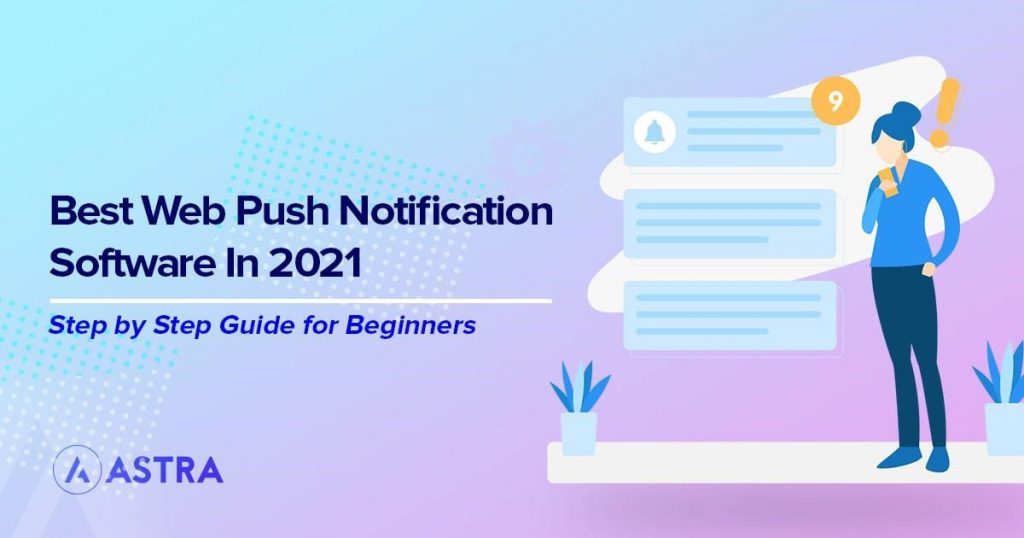
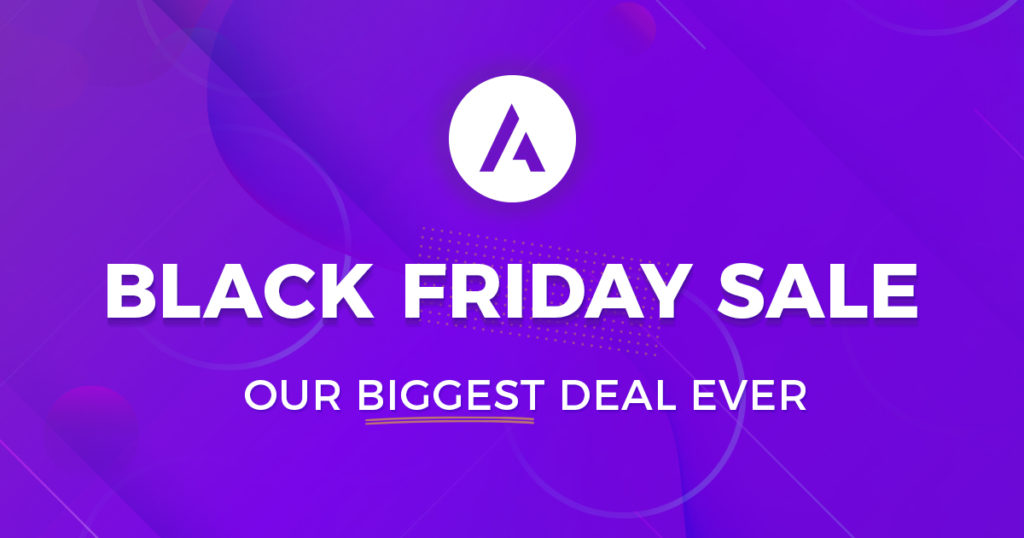
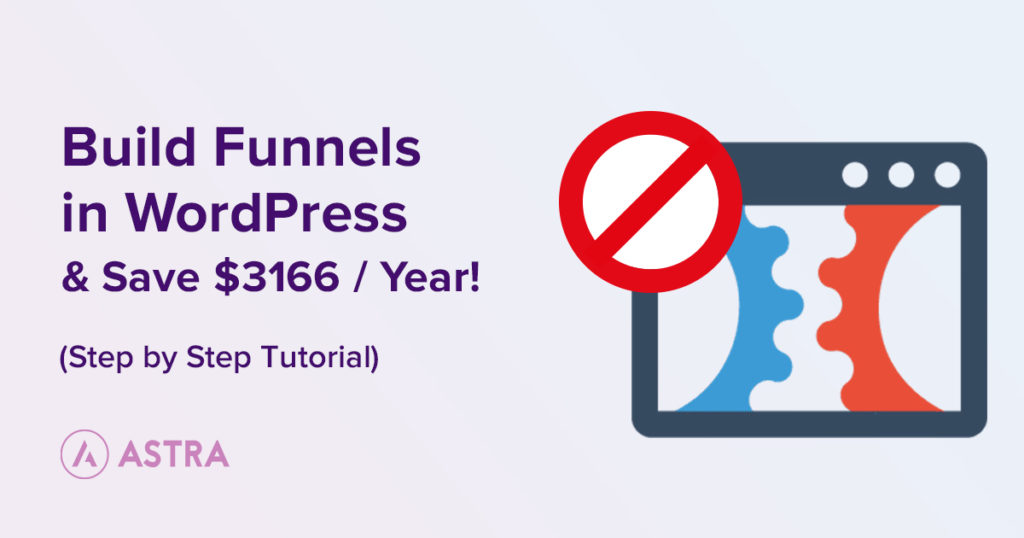

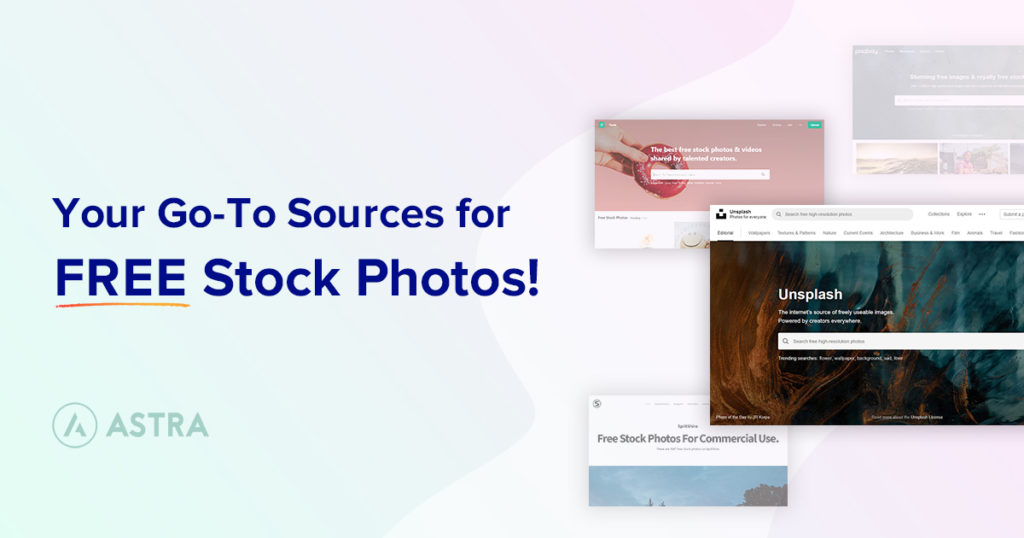

So far I have read the interesting information on Best Web Push Notifications Software in 2021. I love your blog please keep sharing more blogs like this.
So glad to hear that, Jasen! 🙂
Awesome post! Thanks for posting such informative stuff. Really I’m overwhelmed to see such depth article on push notification.
Glad to her that, Chris! 🙂
Wow, what a fantastic post! I truly appreciate your efforts in sharing such valuable information about push notifications. I was blown away by the in-depth analysis and comprehensive coverage of this topic. Thank you for taking the time to create such a well-written and informative piece.